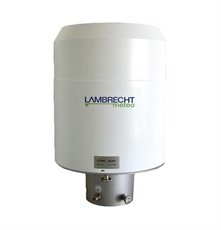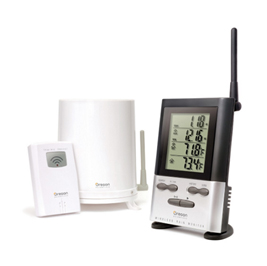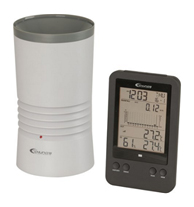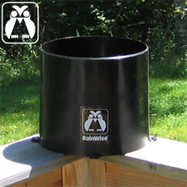What is a Rain Gauge?

While your local weather bureau employs sophisticated tools to predict weather conditions, the resulting weather prediction may not always prove reliable for your location. We uncover why this occurs while explaining what a rain gauge is and why they are useful in both rural and residential areas.
About Rain Gauges
Local weather reports sometimes differ significantly from the conditions you experience at your geographical coordinates. Discrepancies can occur if the location of your local city’s weather station is a significant distance away. A rain gauge is an instrument used to measure the amount of precipitation in a location over a given time. Such devices are simple to deploy and will provide you with precise, hyperlocal real-time rainfall data.
Uses for Rain Gauges
Rain gauges are vital tools in rural areas for making well-informed decisions on when to plant crops when to harvest, and to evaluate which plants are suited to a particular area. In residential areas, keen gardeners can use rain gauges to record hyperlocal rainfall volume and rates for very similar reasons.
Rain Gauge Examples
The Instrument Choice Scientists have assembled four examples of rain gauges that include simple devices with indoor console sets, as well as models with high-tech logging and multi-output sensors suitable for professional applications.
Digital Rain Gauge with Temperature
Product Code: IC-XC0430
The IC-XC0430 Digital Rain Gauge with Temperature features a wireless self-emptying rain collector that measures both rainfall and temperature. The rain collector transmits data up to 150 metres via a low power radio frequency to the main indoor display.The display unit has a HI/LO alert alarm, displays rainfall in terms of rain rate, hourly, daily, weekly, monthly and yearly records and has a radio-controlled clock built-in. The system is a professional standard rain gauge you can use in your backyard.
Wireless Rain Gauge With Outdoor Temperature
Product Code: IC-RGR126N
The IC-RGR126N features an indoor display console with a separate rain gauge and temperature sensor. The rain gauge transmits data up to 91 metres and the temperature sensor up to 30 metres.
The easy-to-navigate indoor console features a daily high rainfall alarm, a digital clock, and you can view historical daily, as well as ten-day total rainfall and temperature records.
RainLog 2.0 Data Logger with Rain Gauge
Product Code: RAINLOG 2.0R
The RAINLOG 2.0R is a very accurate, self-emptying rain gauge with data logging capabilities. The rain gauge is battery operated, logs rainfall at a one-minute resolution, and can collect several years of data. You can easily configure the logger and download collected information using the RL Loader 2 free software (available on a CD or download here). The software enables you to effortlessly print, save, share or export data directly to Excel.
rain[e] Weighing precipitation sensor
Product Code: IC-00.15184.000000![rain[e]%20Weighing%20precipitation%20sensor.jpg](https://www.instrumentchoice.com.au/media/cache/attachment/filter/product_gallery_main/dc6709a2b589a18307d8314dd11076b9/61625/5f9cd9dd74b6b191662528.jpeg)
The rain(e) weighing precipitation sensor is a unique self-emptying collection system that enables the measurement of every single drop to an impressively high resolution of 0.001 mm/m2. The unit boasts full functionality all year round, without the need for antifreeze fluid, which makes the rain[e] environmentally friendly too.
The rain(e) has the following outputs; SDI-12, RS-485 (SDI-12 protocol, ASCII protocol, TALKER protocol, 2 Pulse-Outputs for a linearised, bounce-free output signal, Status-Output (configurable, e.g. rain yes/no or heating on/off) and Analogue output 0/4...20 mA (0...2.5/5 V).
Conclusion
Rain gauges are relatively simple yet incredibly useful devices for both rural and residential use. You can choose from models designed for basic or professional use. Rain gauges enable you to make more accurate and reliable decisions based on your hyperlocal rainfall data.
Browse the full range of Rain Gauges in the Instrument Choice online store or, if you would like more general information about rain gauges or any of the products mentioned featured above, contact one of the Instrument Choice Scientists. We’re here to help! Call 1300 737 871 or email [email protected].
Also interesting
Modbus is a type of serial communications protocol. When your weather station utilises Modbus, your programmable controller can monitor and carry out actions based on wind direction, wind speed, temperature, and more, depending on your weather station's functionality.
If understanding and tracking weather is your passion, and if you're curious about process automation, you have to check out Modbus weather stations.

Light meters are a useful tool to measure light intensity and give the user a lux output. That’s great and all, but why measure light?
In this article, we will tell you why measuring light is essential across a range of applications, from measuring light intensity in workplaces, public spaces and on roads.



